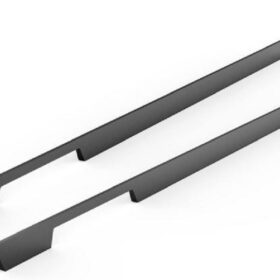Essential Features of Glass Door Profiles
Essential Features of Glass Door Profiles: A Gateway to Transparency
In the realm of modern architecture, glass doors have become ubiquitous, seamlessly blending the boundaries between indoors and outdoors. Their popularity stems not only from their aesthetic appeal but also from their inherent functionality. However, to ensure the optimal performance and longevity of these architectural marvels, careful consideration must be given to the profiles that encase them.
Structural Integrity and Security
The primary function of glass door profiles is to provide structural integrity and security. They must be robust enough to withstand wind loads, impact forces, and potential break-in attempts. High-quality profiles are typically manufactured from durable materials such as aluminum or steel, offering excellent strength-to-weight ratios and resistance to corrosion.
Thermal Insulation and Energy Efficiency
In an era of rising energy costs, thermal insulation plays a crucial role in minimizing heat loss and maximizing energy efficiency. Glass door profiles can be designed with thermal breaks, which are materials that disrupt the flow of heat, preventing it from transferring from the warm interior to the cold exterior. This feature ensures a comfortable indoor environment while reducing energy consumption.
Weather Resistance and Durability
Glass door profiles are constantly exposed to the elements, including wind, rain, and sunlight. To ensure their longevity, they must be resistant to weathering effects such as fading, cracking, or warping. High-quality profiles are typically treated with protective coatings or finishes that enhance their durability and maintain their appearance over time.
Aesthetics and Customization
While functionality is paramount, glass door profiles also play a significant role in enhancing the aesthetic appeal of a building. They come in a wide range of styles and finishes, allowing architects and homeowners to customize their designs to match the architectural character and personal preferences. From sleek and minimalist to ornate and traditional, there is a glass door profile to suit every taste.
Compatibility and Ease of Installation
It is essential to ensure compatibility between glass door profiles and the glazing systems. Profiles should be engineered to accommodate different types of glass, including tempered, laminated, or insulated glass units. Additionally, the profiles should be easy to install, allowing for efficient and cost-effective construction.
Conclusion
The essential features of glass door profiles are paramount in ensuring their functionality, durability, and aesthetic appeal. By considering factors such as structural integrity, thermal insulation, weather resistance, aesthetics, and compatibility, architects and homeowners can create glass doors that seamlessly connect the interior and exterior spaces, while providing a comfortable and energy-efficient living environment.
-
2024-09-14Exploring the Different Types of Modern Closet Door Pulls and Their Applications
-
2024-09-14How Cabinet Door Pull Handles Support High-Traffic Areas
-
2024-09-06Cost-Benefit Analysis of Investing in High-Quality Long Wardrobe Door Handles
-
2024-09-04How Flat Cabinet Handles Enhance Modern Interior Design






